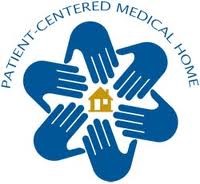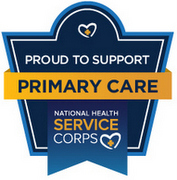
The sexual choices and values our young people hold have real-life consequences far beyond sexuality itself.
In my nearly 25-year career at Focus on the Family as a social science researcher, I am constantly amazed and encouraged in my faith at how what God requires of us in our familial and sexual lives is never contrary to good, honest science. The two correspond in remarkable ways. And why shouldn’t it? When sociologists study the behaviors of man without agenda, they unwittingly discover the rightness of God’s wisdom and care in His directions to us. The scholars just don’t realize it. We as believers should.
This is demonstrated in a new report from the United States Centers for Disease Control (CDC). It’s the first ever of its kind, examining a very large and diverse array of health behaviors of high school students according to their self-reported sexual activity. What makes this report particularly interesting, beyond its categorization by sexual activity, is it examines widely varied safety and health behaviors from bike helmet and seat belt use to substance abuse, diet, doctor’s visits, exercise and even tanning bed use. The two major conclusions from the report are quite stark:
- The virginal students rate significantly and consistently better in nearly all health-related behaviors than their sexually active peers. They do so by remarkably stunning measures.
- Teens who have sexual contact with the same or both sexes have remarkably lower percentages of healthy behaviors overall than their heterosexually active peers.
An additional report conducted by Child Trends, a Washington, DC-based think tank focused on children’s health, adds to the robust research literature on this topic. It finds that teens from homes where mother and father have a healthy relationship, both have warm, monitoring relationships with their children and the family has regular, dependable schedules and practices at home are substantially less likely to be sexually active by every measure.
Here’s a sampling of various measures the CDC examined and the health disparities between the three categories of students: virginal, heterosexual and same-sex or bi-sex sexually active.
- Seat Belt Use: Opposite-sex-active (OSA) teens are 143% more likely to never or rarely wear a seat belt than their virginal peers. Same-sex/bisexual active (SS/BA) teens are 317% more likely than their virginal peers.
- Passenger w/Drinking Driver: OSA teens are 94% more likely to ride with a driver who’s been drinking than their virginal peers. SS/BA teens are 115% more likely than virginal students.
- Dating Violence: OSA teens are 260% more likely to experience some form of physical violence in dating relationships than virginal peers. SS/BA teens are 683% more likely than virginal youth.
- Smokes Daily: OSA teens are 3300% more likely to smoke daily than virginal peers. SS/BA teens are 9500% (you read that right) more likely than their virginal classmates.
- Ever Binge Drank: OSA teens are 337% more likely to ever binge drink than virginal peers. SS/BA teens are 375% more likely than virginal their peers.
- Pot Use: OSA teens are 336% more likely to be currently using marijuana than their virginal peers. SS/BA teens are 483% more likely than the virginal.
- Ever Injected Illegal Drug: OSA teens are 500% more likely to have ever injected a non-prescription drug than virginal peers. SS/BA teens are 2333% more likely.
- Felt Sad of Helpless: OSA teens are 48% more likely to report feeling so sad or helpless almost every day for 2 or more weeks in a row that they stopped doing some of their usual activities compared to their virginal peers. SS/BA teens are 181% more likely to feel this way compared to virgins.
- Tanning Beds: OSA teens are 282% more likely to use indoor tanning beds than their virginal peers. SS/BA teens are 364% more likely than virginal peers.
- Eat Breakfast Daily: OSA teens are 24% less likely to eat breakfast daily than virginal peers. SS/BA teens are 48% less likely than virginal classmates.
- Eight Hours Sleep: OSA teens are 21% less likely to get 8 hours of sleep a night than virginal peers. SS/BA teens are 34% less likely than virgins.
- Asthma: OSA teens are 24% more likely to have ever had asthma than virginal peers. SS/BA teens are 48% more likely.
- Physical Fight: OSA teens are 133% more likely to have been in a physical fight than virginal peers. SS/BA teens are 187% more likely.
- Dentist Visit: OSA teens are 8% less likely to have visited the dentist in the last year than virginal peers. SS/BA teens, 20% less likely.
It is intriguing to note how many of these health measures have no seemingly direct relation to sexual activity and decision making itself, even tangentially; things like seat belt use, eating breakfast daily, smoking, dentist visits, illegal drug use, suffering from asthma, etc. Obviously, there’s a curious and meaningful relationship between our teens’ sexual values/activity and a substantial number of unanticipated but very consequential health behaviors.
What is more, this data seems to challenge the popularly held charge that same-sex and bi-sexual sexually active kids have these more troubling measures and higher risk of attempted suicide because their sexuality is not affirmed by the larger society. This is used as accusation against those of us who cannot support any non-marital sexual behavior. We are told that people like us are responsible for such tragic outcomes. It’s no minor charge. But is it true?
If it were, it would follow that opposite-sex sexually active kids are taunted and rejected for their sexuality as well given their remarkably high levels of unhealthy behaviors and higher levels of suicidality than the virginal. This, of course, it would also mean that the virginal are the most widely accepted, celebrated and encouraged students at school. Does anyone believe that?
This “accept-our-sexuality-or-we-die” accusation also faces stiff challenge by the fact that even in the most gay-affirming countries in the world, these imbalances in health measures and suicidality are present. In fact, there is nowhere in the world where the hetero and homosexual measures, in general are close. That is seen in research of same-sex identified adults in places like Scandinavia, the Netherlands and Switzerland. See here, here, and here for example.
It’s difficult to determine from this CDC report alone just how these various measures are related to one another. Does sexual activity drive the increase in other negative health behaviors, vice versa or if at all? This data does not say. But the fact that the CDC measured all these health behaviors by sexual activity and distributed it to health professionals around the world in this major report certainly indicates their relationship is of significant interest to health-care workers.
These findings should be very concerning to all parents and professionals concerned with our teens’ general health and well-being. The sexual choices and values our young people hold have real-life consequences far beyond sexuality itself. Thus, there are indeed compelling reasons to encourage teens to choose not to be sexually engaged with peers of the opposite or same-sex.
Our children should know there’s very compelling scientific evidence on so many levels showing how saving the precious gift of their sexuality for the safe harbor of marriage is not about old-time moralism or unhealthy sexual repression. Just the opposite is true. Chastity is related to so many substantial measures of human health and well-being that it should be strongly appreciated by parents, health and education professionals as one of the most important health boosting factors for our nation’s young adults.
 by Glenn Stanton
by Glenn Stanton
Glenn T. Stanton debates and lectures extensively on the issues of gender, sexuality, marriage and parenting at universities and churches around the world. He is the author of eight books on families, theology and gender and contributor to many others. His latest two are Loving My (LGBT) Neighbor: Being Friends in Grace and Truth and The Ring Makes All the Difference.





